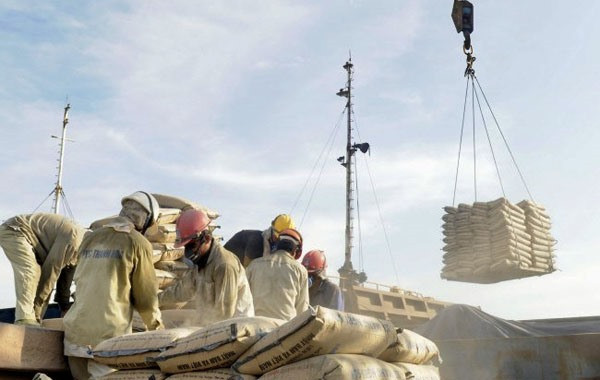 The imposition of cement export tax is said to undermine the industry’s competitiveness. (Photo: baoxaydung.com.vn)
The imposition of cement export tax is said to undermine the industry’s competitiveness. (Photo: baoxaydung.com.vn)Hanoi (VNA) - Theimposition of 5 percent export tax on cement is weighing down the industry,which has been facing a severe surplus of supply over demand in the localmarket.
Under Decree No 122/2016/ND-CP, which took effect from September 1,2016, if spending on natural resources and energy for production accountsfor 51 percent of a product’s price or higher, the product will be subjectto an export tax of 5 percent. The decree was raised with an aim to limit theexport of natural resources and minerals. Cement is currently subject to thetax.
The National Assembly Finance and Budget Committee has asked the Ministry ofFinance to review this regulation, adding that it was difficult to verify thevolume of natural resources producers are using and the costs of energy theyare incurring, making the regulation infeasible and burdening export firms.
The Committee said the appropriateness of this regulation in reality must beevaluated to propose amendments and remove difficulties for firms.
According to Nguyen Quang Cung, President of the Vietnam Cement Association,there is currently no basis to verify the content of natural resources andenergy costs. He said that they still rely on the declaration of producers,which is a loophole that firms could exploit to avoid tax.
In addition, such tax imposition on cement would discourage the application ofnew technologies in production to reduce prices. Modern technologies would helpcreate economies of scale, thereby reducing total production cost, whilespending on natural resource materials is unchanged. Therefore, the percentageof natural resource cost could exceed 51 per cent and it is possibly that theywould pay much more tax, Cung said.
If tax imposition on cement aims to prevent the export of natural resources,other tax calculation methods such as partially progressive tariff like what isapplied for the personal income tax should be applied rather than a fixed taxrate, he added.
He said that the export tax was undermining the competitiveness of the cementindustry, which was struggling with a stockpile in the domestic market.
The association said that the current production capacity of domestic cementplants totalled 88 million tonnes per year and expansions and new plants wereforecast to boost production capacity to between 120 million and 130 milliontonnes by 2020.
Meanwhile, domestic consumption demand was anticipated to reach only 82 millionby 2020.-VNA





























